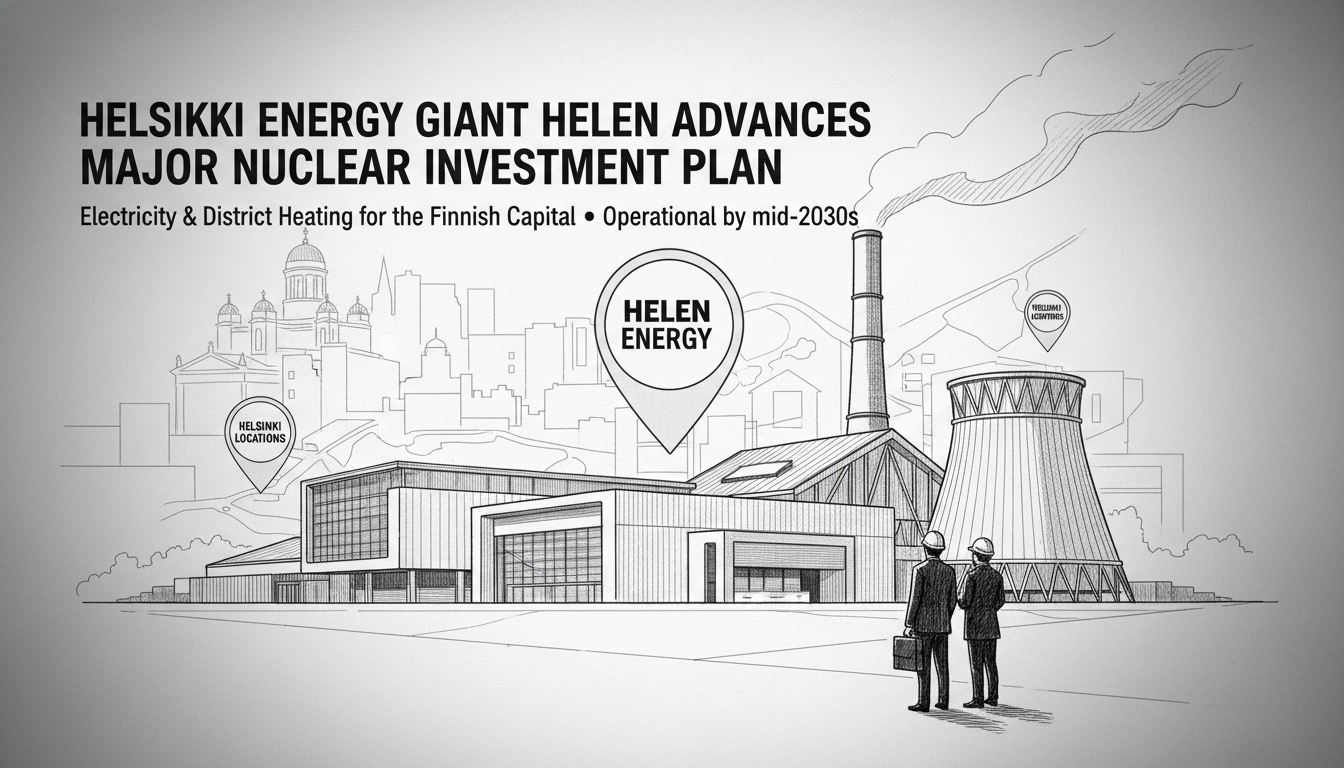Helsinki's city-owned energy company Helen is moving forward with a nuclear power project that represents its largest potential investment ever. The company has launched a feasibility study examining three possible locations for a new nuclear facility in the Finnish capital.
The project marks a significant development in Finland's energy landscape. Helen initially appeared focused on acquiring a reactor solely for district heating. Now the company confirms it's considering a dual-purpose plant that would generate both electricity and heat for Helsinki residents.
Chief Executive Olli Sirkka explained the strategic thinking behind this approach. He noted that combining electricity and heat production would improve the reactor's revenue potential and business case. The company sees electricity generation as an attractive additional benefit.
Sirkka highlighted the efficiency advantages of their proposed model. In existing Finnish nuclear plants like Olkiluoto and Loviisa, he pointed out that two-thirds of generated power typically gets discharged into the sea as waste heat. Only one-third becomes electricity. Their proposed facility would utilize 100 percent of the reactor's output for both electricity and heating purposes.
The planned facility would use small modular reactor technology. While often called 'small,' this particular installation would generate approximately 500 megawatts of power. That represents substantial capacity for a city the size of Helsinki.
Financial considerations remain crucial for the project's viability. Sirkka indicated the investment would reach billions of euros. He stressed that keeping costs toward the lower end of estimates would improve the project's chances of success.
Helen ranks as Finland's second-largest energy company. The company reported substantial financial results last year with 1.5 billion euros in revenue and 159 million euros in operating profit.
The nuclear initiative raises questions about Helen's existing partnership with Finnish company Steady Energy. Several years ago, Helen signed a preliminary agreement with Steady Energy to develop a small nuclear reactor specifically for district heating. If Helen opts for the dual electricity-heat approach, Steady Energy's technology wouldn't fit the requirements.
Sirkka acknowledged this potential shift. He stated they're evaluating both pathways—heat-only versus combined heat and electricity. The company recognizes that Finland needs additional electricity generation capacity alongside heating solutions.
Helen has identified approximately ten potential international suppliers for the reactor technology. The company hopes the facility would offer flexible operation, allowing adjustment between heat and electricity production based on demand.
Three Helsinki locations are under consideration for the plant. The study will examine Vuosaari and Salmisaari power plant areas, plus the Norrberget area in western Östersundom. Environmental impact assessment procedures will begin next for these location options.
If the project proceeds smoothly through approvals and construction, the facility could become operational around the mid-2030s. This timeline reflects the extensive planning, regulatory review, and construction periods typical for nuclear projects.
Globally, small modular reactor projects are gaining momentum. The International Energy Agency recently projected that SMR investments will grow rapidly in coming years. The agency expects investments to increase from five billion dollars currently to over 25 billion dollars by 2030. Total investments could reach 670 billion dollars by 2050 according to their forecasts.
This development comes as Finland continues its leadership in nuclear energy adoption. The country recently commissioned Europe's largest nuclear reactor at Olkiluoto, demonstrating its commitment to nuclear power as part of its energy mix. Helsinki's potential entry into nuclear power generation represents another step in this direction.
The project's scale and location in a capital city make it particularly noteworthy. Urban nuclear facilities remain relatively rare globally, though technology improvements have made them increasingly feasible. Helen's careful evaluation of both technical and financial aspects suggests a measured approach to this substantial commitment.
Finland's energy landscape continues evolving toward low-carbon solutions. The country has aggressively pursued renewable energy alongside nuclear power to achieve its climate goals. This potential nuclear investment in Helsinki aligns with broader national strategies for clean, reliable energy production.
